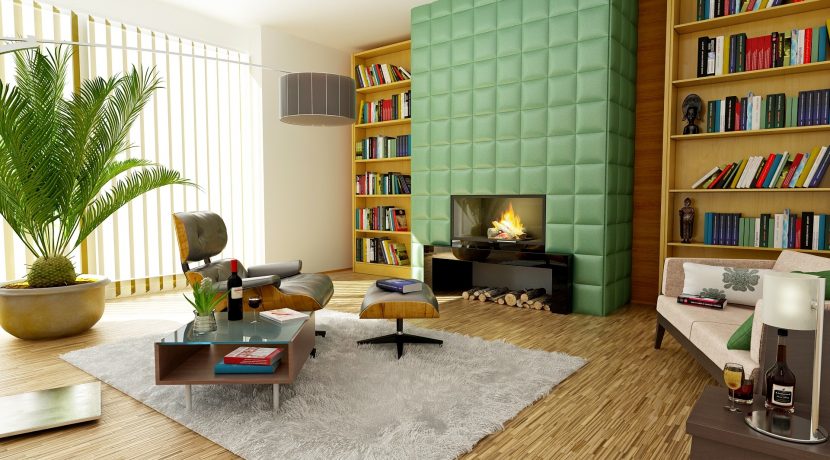Do you live in an apartment high-rise, 15 floors up where you have no gardening space? Do you have a lot of artwork, but nothing lively to spruce up your home? Are your corners bare or does your home feel stuffy? Maybe you just need a terrarium or nice flowering bush to spice up your space. Plants for Indoor Containers Indoor planting possibilities are endless. The ideas you can come up with are only as limited as your budget, patience, imagination and space. Whether you are just wintering geraniums on the windowsill or raising orchids in your bathroom, growing plants indoors opens you up to all sorts of fun.
Indoors, you can grow plants that are native to the tropics or desert without much trouble. Foliage plants are great for a variety of reasons. Crotons have bright colors and glossy, stiff leaves. You can go with something small, like the African violet, or something tall, like the tall umbrella plant. Plants improve the air quality in your home. Spider plants, ivy, bamboo, and mother-in-law’s tongue all have something in common. They are known to absorb the toxins in the air. Plants also release oxygen during photosynthesis and use up carbon dioxide, which makes the air you breathe better quality. How to Choose Houseplants Some plants like to be left alone and absolutely thrive on neglect. Others need to be nurtured and pruned daily. Pick plants that suit your willingness to work on a garden and those that suit your tastes. Also, pay attention to how much light is necessary for the plants you pick so you can make sure to have a suitable place in your apartment or home for them. Choose easy-care plants – If you travel a lot, you need to choose plants that don’t require a lot of care and watering. This way you can go away without worrying or having to hire a house-sitter. Self-sufficient indoor gardens are not impossible. Try a terrarium, which creates its own atmosphere and requires little care — they only need a good start and an occasional burst of fresh air. Sometimes you will have to thin the plants, but that’s about all. Match plants to environment – Some plants require special needs. These needs actually allow them live among us. Pothos grow in low light and are native to the shady underside of the tropical rain forests. They would be happy to be in a library of sorts, growing happily up the bookcases. Some plants, like bird’s nest ferns, thrive in the moist air of the bathroom. Plants like the lemon tree love a nice picture window with lots of sunlight. Don’t put them too close though, or you’ll burn the leaves! Just be sure to match the right plant with the right environment in your home. A lot of houseplants can leave their indoor safety in the summer for the porch in the front yard, but make sure it’s summer before you put them outside. Before you bring them back indoors in the fall, be sure to check for any pests hitching a ride under the leaves, on the stems or on the soil surface. One bug can infest all of your plants once in the house. Pick suitable containers – There are a lot of different containers available. You can have your interior designer or your own personal tastes guide you in choosing the right containers for your plants. Just make sure there are holes for drainage on the bottom of the container. If your choice of material happens to be copper, don’t panic. You can plant in one of those plastic pots with drainage holes, set a drainage dish inside the copper pot, and then set the plastic pot on that. For a terrarium, use something clear, glass or plastic. If the glass or plastic becomes too foggy, all you have to do is uncover the terrarium. If you have no cover for your terrarium, be sure to water it once in a while. Give houseplants the right soil – Just as in gardening outside, be sure to choose the right soil for your plants. A general indoor potting soil mix will be good enough for most plants. Plants like orchids and cactus will need special mixes, and you can find those in your gardening store, usually marked well so you know what kind of plants the soil is for. Cactus requires faster drainage and orchids usually grow on trunks of trees, so they need a lot of bark and little soil. If you are building a terrarium, start with a layer of aquarium gravel (about 2 inches or so) and cover that with a thin layer of charcoal then top it off with plastic or sheet moss. After that, add the soil and start planting away. Container plants are a beautiful way to spruce up any living space, and it’s not as scary as you might think. As long as you pay attention to what your plants need, they’ll grow wonderfully in your indoor environment. Be sure to place them appropriately and follow the care instructions that came with your plant.
All rights reserved to the initial publisher for Gardening know how.
Collected and published by Arms &McGregor International Realty® editorial team. Get in touched with us at [email protected]

